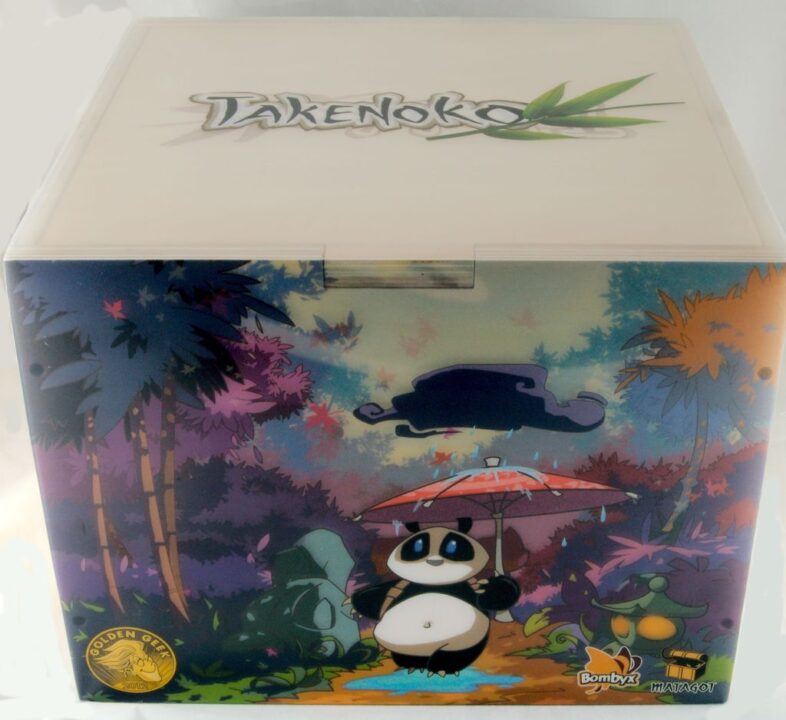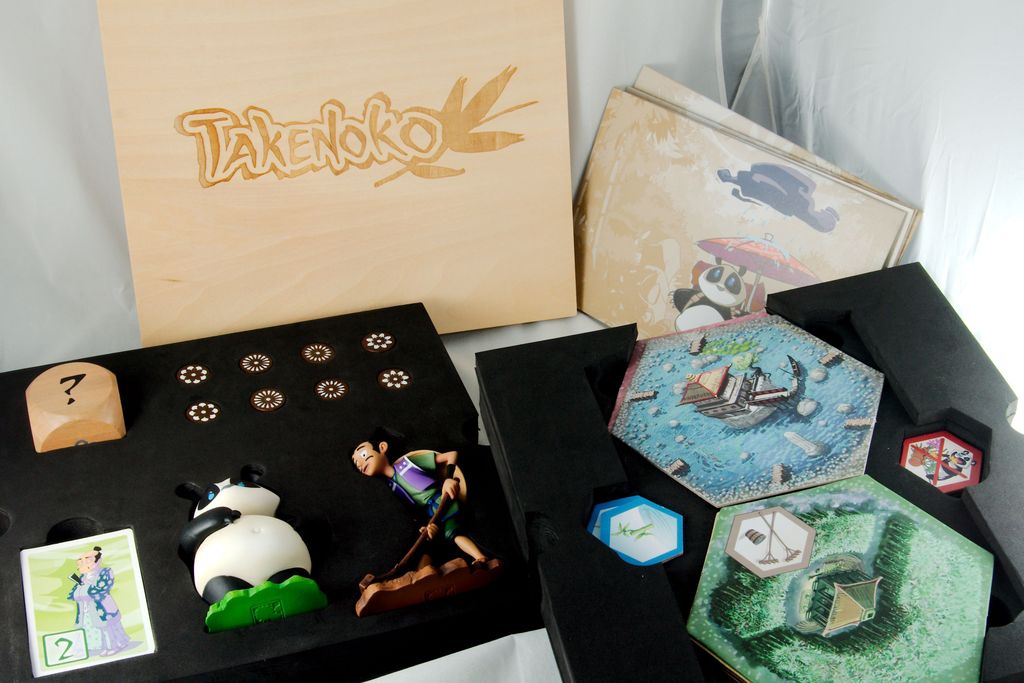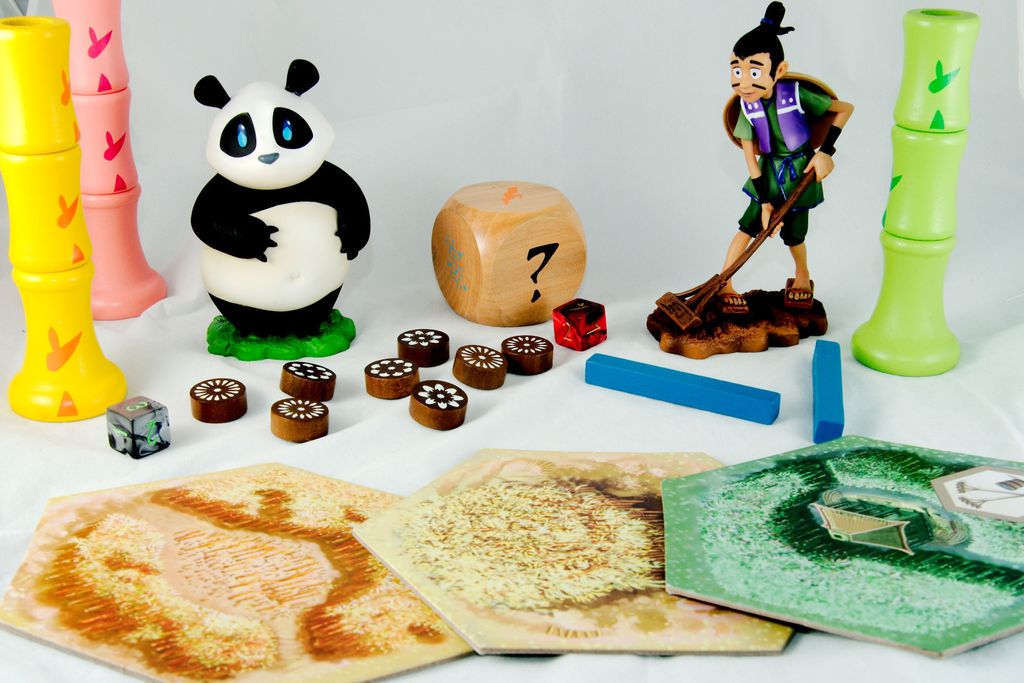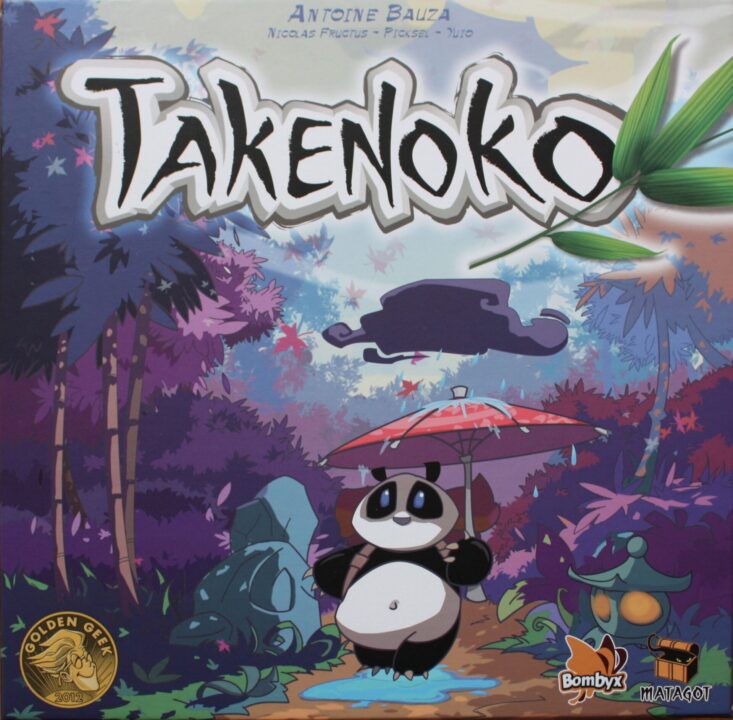Overview
Welcome to the colorful world of bamboo gardens and the hungry imperial panda in our Takenoko Review. Today, we’re venturing into this charming universe, designed to delight and challenge. As we unfurl the bamboo mat of this review, we’ll dig into the rich soil of gameplay mechanics, survey the fertile grounds of player interaction, and admire the landscape’s theme and visual design. With each move as thoughtful as the gardener’s delicate care, join me on this journey to uncover whether Takenoko stands tall amongst the verdant canopy of board game classics.
How It Plays
Setting Up
Takenoko begins with a simplistic yet engaging setup: players place a single hexagonal pond tile in the center of the play area and give each player an individual board to keep track of their actions. The miniature bamboo sections, the adorable panda, and the farmer figurines are distributed within reach, establishing the environmental stage upon which our strategic harvest unfolds. The decks of objective cards are shuffled and offer players flora, fauna, and garden designs to embrace during gameplay.
Gameplay
The heart of Takenoko’s gameplay beats with an endearing molecular progression: each player’s turn hints at a blend of planning and unpredictability by rolling the weather dice, which sets the tone for actions such as cultivating plots, irrigating land, or feeding our rumbly-tummied panda. As bamboo towers grow across hexagonal plots, strategists and opportunists alike adopt roles as gardeners and pandas gardening or gorging their paths towards objectives.
Winning the Game
Victory in Takenoko isn’t just attributed to the girth of the bamboo or the contentment of the panda; rather, it culminates from fulfilling the permutation of individual objectives collected from among the intricacies of plot, bamboo, and gardener goals. The win trots to the player who adeptly maneuvers around the chain of sustainability: through planting, feeding, and garden cultivation, a balancing act for the bamboo banquet triumph.
Want to know more? Read our extensive strategy guide for Takenoko.
A Strategic Gardener’s Delight: Takenoko Review
Recently, I delved into the endearing world of Takenoko, and I must say, the strategic layer beneath its charming exterior is intriguing. From my first play, I quickly realized it’s a masterful dance between foresight and adaptability.
Panda-mic Growth Strategies
Every turn felt like a juicy bamboo shoot of delightful choices. Where do I send the horticulturist next? was a constant question, stressing the importance of good spatial planning—a paramount feature of the game’s mechanics. In one session, I attempted an ‘all bamboo growth’ strategy, which in theory sounded fantastic. Yet, a friend’s rogue panda wreaked havoc on my garden, reminding me that flexibility is key.
Irrigation Intricacies and Weather Whims
Transitioning between moves, the role of weather as depicted by the weather die in Takenoko intrigued me. We’d breathlessly await the roll that could spur our strategies forward or send us scrambling to mitigate a suboptimal one. Once I capitalized on a string of rainy days—transforming my barren grid into a lush paradise. Yet, strategies in Takenoko must be as fluid as the water nourishing the bamboo. The uncertainty added by the weather introduced a layer I hadn’t anticipated but thoroughly enjoyed.
Stitching together an effective game plan in Takenoko involves both personal advancements and keeping an eye on your opponents’ gardens. And just like cultivating bamboo, it’s about finding balance. Coming up next, let’s branch into the realm of player interaction and dynamics—an equally vital and thrilling aspect of Takenoko.

A Garden of Social Farming
My ‘Takenoko Review’ would be incomplete without digging into the rich soil of player interaction that flavors every game. Firstly, the game ingeniously employs a sense of harmony among players. Unlike the predominantly competitive nature of many strategy games, Takenoko allows for mutual progress, a blend seldom found in the gardens of the board game world.
Cultivating Strategies Together
The intricate dance between cooperating to cultivate the bamboo garden and racing to complete personal missions fosters a fascinating dynamic. This shines in my memories as moments of laughter mix with groans of dismay when the panda munches on a stalk I’d hoped to reserve for my objective. Furthermore, the option to relocate the gardener or the playful panda promotes a jostling among players that stirs a friendly rivalry.
The Gentle Art of Sabotage
Additionally, the plot thickens as players subtly sabotage each other. The scheme is never blatant – perhaps positioning a garden tile just so, or strategically consuming a key bamboo piece with the panda. These choices nudge you to pay mind to others’ plots while pursuing your path. Crafting my plans while adapting to the surprising moves of my friends brings a sparkle of amusement to each session, nestled alongside fond snacks-and-game nights recollections.
Ah, and as the interactions in the garden blossom, the aesthetic delight of the bamboo columns can’t ever be too far out of sight. But before diving into the successes and quirks of the theme and visual design in the next section, let’s glean one last bamboo shoot from this fertile interaction dynamic.

Immersing into a Pastel Panorama
In this Takenoko Review, when it comes to a thematic journey and sensational art, rarely do other games match the elegance of Takenoko. Without question, the game’s aesthetic is a love letter to its evocative Japanese setting. From the lush bamboo sections that stack snugly, rising monumentally on the board, to the vibrant patterned plot tiles, each component hums with meticulous detail. In my many game nights, I’ve observed players—both young and old—marvel at the cheeriness of this horticultural haven. It’s a sensory delight that never grows old.
Lively Pawns and Tiles
Admittedly, it’s impossible to start a session without praising the whimsy of the panda and gardener figurines which possess a certain charm that routinely spark adoration and player attachment. Each session transforms into a cozy tale, nurturing an intangible bond between the game’s beautiful artifacts and the memorable player experiences.
Colorful Ambiance Enlivening Play
Moreover, the tranquil shades that grace the card illustrations perfectly echo the laid-back yet strategic nature of play. The craftsmanship extends its reach, anchoring an engrossing world that encourages long-term engagement. It is games like Takenoko that reaffirm my belief in how a board game’s theme and visual intricacies contribute extensively to overall enjoyment and storytelling. Typically finishing with an eruption of satisfaction and applause, my experiences certainly tilt the scales. As such, the recommendation comes brightly tinted with positivity.

Conclusion
As we round off this Takenoko review, it’s clear that this charming game offers a refreshing balance between strategy and luck, wrapped in a beautifully illustrated package that enhances its thematic experience. Whether you’re meticulously plotting your next move to grow the most bamboo or racing to complete objectives before your opponents, Takenoko delivers a delightful blend of competitive excitement and aesthetic pleasure. It’s flighty enough to be a hit at family game nights, yet strategic enough to satisfy the appetites of more seasoned gamers. Neither overly complex nor simplistic, Takenoko finds the sweet spot that makes it accessible and engaging for a wide range of players. Based on my experiences and the shared laughter it has brought to the table, Takenoko has thoroughly earned my recommendation as an addition to anyone’s board game collection—a beacon of fun, engagement, and panda-themed adventure.


